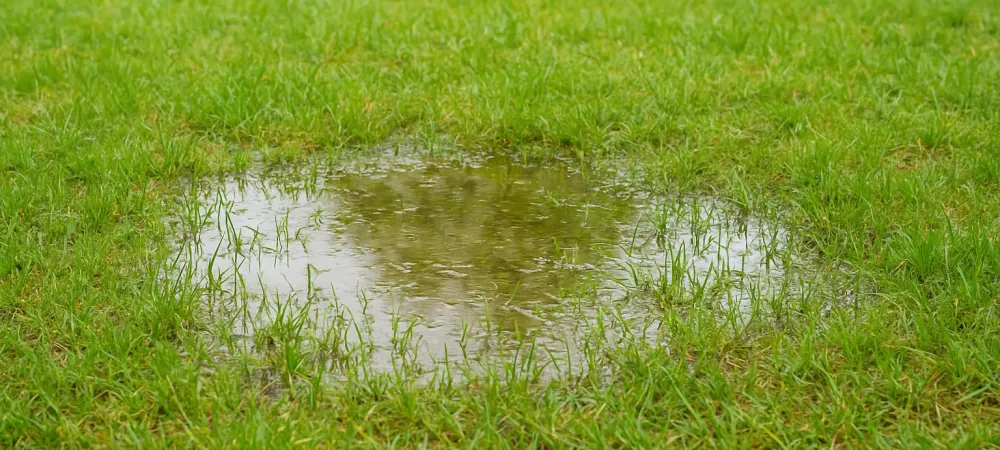Is Poor Drainage Killing Your North Texas Lawn?

If you live in North Texas, you know our soils can be tough. Heavy clay holds water in the spring, then bakes dry in the summer. One of the biggest reasons lawns fail in our area—whether it’s Bermuda, Zoysia, or St. Augustine—is poor drainage.
Here’s what you need to know to protect your lawn and keep it thriving.
How Poor Drainage Hurts Your Lawn
When water doesn’t move through the soil, your lawn pays the price:
- Roots suffocate: Standing water fills air pockets, starving roots of oxygen.
- Soil compacts: Wet clay packs down tight, leaving no room for roots to grow.
- Disease thrives: Fungal issues like brown patch and gray leaf spot love cool, wet soil.
- Grass dies back: Lawns may look fine after spring planting, but heavy rains later can thin or kill the grass.
Early Help: If you’re noticing soggy spots or thinning grass, don’t wait. Contact Gro Lawn today to schedule a free drainage assessment before the problem worsens.
Signs Your Lawn May Have Drainage Problems
Watch for these warning signs in your yard:
- Puddles or soggy spots that linger for days
- Grass yellowing or thinning between houses or fences
- Areas that feel swampy underfoot while the rest of the yard looks normal
- Disease patches that return year after year
Pro Tip: Walk your lawn after a heavy rain. Areas that stay wet or feel spongy are prime candidates for drainage correction.
See Poor Drainage in Action
Want to understand the problem visually? Check out these quick examples:
- Poor Drainage on Lawn
- Poor Drainage Systems and Effects To Your Lawn
Learn & Act: After watching, schedule a consultation with Gro Lawn to see how your yard measures up. Early fixes save time and money.
Practical Advice for North Texas Lawns
Before spending money on sod, seed, or aeration, fix the drainage problem first. No grass variety thrives in poorly drained soil. Keep these tips in mind:
- Avoid the “spring rain trap”: Planting grass right after spring rains may look fine for a few months—but once rains return, it fails.
- Mow at the recommended height: Tall grass in wet soil traps humidity and disease. Stick to the proper height for your grass type.
- French drains aren’t magic: Installing drains alone doesn’t fix the soil. Grading and proper drainage are the long-term solutions.
- Topdressing helps—but only after drainage is corrected: Adding organic matter can improve soil once the water problem is solved, but it’s not a cure on its own.
North Texas Lawn Tip: Mark soggy areas in your yard and address drainage issues before planting new grass. Even minor grading or drainage solutions now will give your lawn a strong start.
Bottom Line
In North Texas, poor drainage is the single biggest obstacle to a healthy lawn. Until it’s fixed, no amount of fertilizer, aeration, or reseeding will deliver lasting results.
Fix drainage first. Then, and only then, plant grass. That’s how you get a lawn that survives Texas weather.
Watch & Learn: Check out Poor Drainage on Lawn and Poor Drainage Systems and Effects To Your Lawn to see what to look for in your yard.
Need help fixing drainage in your yard? Gro Lawn’s North Texas lawn care specialists can assess your soil, recommend the best drainage solutions, and help you get a lawn that thrives year-round. Contact us today for a free consultation!
